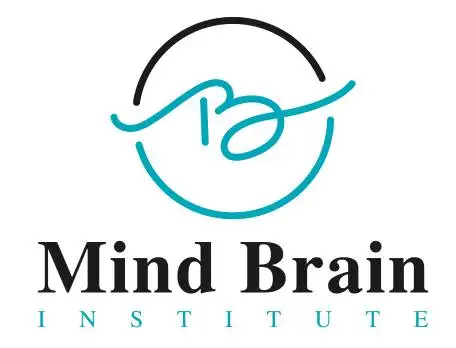
- Posted By Dr. Anuranjan Bist
- Comments 0
Sound Therapy for Brainwaves to Influence Mood
Table of Contents
The Power of Sound
Do you ever wonder in awe at a specific song or sound that changed your mood? Perhaps a relaxing song eases you from work, or intense songs rev you up. No coincidence; sound can have mastery over your brainwaves, which are electrical impulses within your head. Sound therapy for brainwaves is a technique of applying correct frequencies to create a calm atmosphere, combat stress, and concentrate the mind.

Your mind may be guided to various states through the application of well-structured sounds, such as relaxation, enhanced concentration, or good sleep. With the fast pace of life that we live today, stress, lack of sleep, or distraction is sneaking its way into most lives. Sound therapy is an easy and natural means to boost mental health.
In the day and age that we live in today, in this article, we will understand how the various sound frequencies affect your brainwaves, how they work, and how you can apply sound therapy to your life.
Understanding Brainwaves
Your brain never rests and produces electrical impulses in the form of brainwaves. Brainwaves are utilized in controlling your actions, emotions, and thoughts. Brainwaves are quantified in terms of wave speed in hertz (Hz). Various brainwaves correspond to various mental states:
- Delta waves (0.5–4 Hz): Slowest brainwaves associated with sleep and relaxation.
- Theta waves (4–8 Hz): Associated with relaxation, meditation, and creativity.
- Alpha waves (8–13 Hz): Relaxation, focus; rest and focus are their most effective pairing.
- Beta waves (13–30 Hz): Thought waves for performing intellectual tasks, puzzles, and concentrating.
- Gamma waves (30–100 Hz): Association with higher-level processing, learning, and memory.
The comparative balance of these brainwaves determines your overall mood and attitude. Too much Beta, for instance, creates tension and stress, while too much Alpha and Theta creates relaxation and concentration.
Sound therapy for brainwaves does this by affecting such patterns, calling forth your mind to perform the proper relaxation, fantasy, or concentration.
Forming Brainwaves by Sound Frequencies
There exist specific frequencies used in sound therapy to lead your brain playfully into states. Your brain will entrain automatically with outside rhythms, something called brainwave entrainment.

Some of the ways that sound therapy can be used to affect brainwaves include:
- Binaural beats: Two sounds nearly colliding in both your ears. Your brain now has a new sound and resynchronizes your waves to fit.
- Isochronic tones: On-off beats for one repeated note make it easier for the brain to keep up.
- Music and nature sounds: Some music and some nature sounds will relax or concentrate the brain, too.
The different frequencies affect brainwaves:
- Delta ranges (0.5–4 Hz): Induce sleep and relaxation.
- Theta ranges (4–8 Hz): Increase meditation, imagination, and healing from emotions.
- Alpha ranges (8–13 Hz): Minimize stress and maximize concentration.
- Beta (13–30 Hz): Maximize alertness and problem-solving.
- Gamma (30–100 Hz): Maximizes learning, memory, and thinking.
You may retrain your brainwaves to think whatever you desire in your mind by listening to the respective frequency. You can relax after working together with Alpha tones, for example, or focus on work with Beta frequencies.
Sound therapy for brainwaves is easy, safe, and can be incorporated into your life.
Sound Therapy Techniques and Devices
If an individual intends to benefit from sound therapy for brainwaves, then the following effective techniques and devices can be utilized in order to get the same:
- Binaural Beats Apps: These produce two extremely close tones for the two ears. These can be controlled easily and personalized, i.e., one can download relaxation, focus, or sleep frequencies.
- Isochronic Tones: These are independent of the headset, and they generate a beat which the brain will automatically entrain to. These can be used without restriction with study or with meditation.
- Music Therapy: Special music or music cassettes with a consistent rhythm may be employed in the endeavor to provoke brainwave entrainment. Ambient music, classical music, or special music is known to relax and promote creativity.
- Nature Sound: Ambient forest, rain, or ocean wave sound will also lead to the production of Alpha waves, relaxation, and stress release.

To be used optimally:
- Listen to the binaural beats with headphones.
- Choose a quiet location.
- Listen for 10–20 minutes so that your brain gets entrained at the frequency.
With every use of these tools on a daily basis, sound therapy for brainwaves can be an effective exercise in your life to soothe you, sharpen your concentration, and stabilize your mood.
Scientific Evidence and Research On Sound Therapy for Brainwaves
Various studies verify the efficacy of sound therapy on brainwaves. The scientists have identified the frequency of sound affecting brain function, mood, and cognitive ability. Binaural beats, for instance, were found to be soothing by triggering Alpha and Theta brainwaves that reduce anxiety and tension levels.
It is found in other studies that Beta and Gamma frequencies are useful to enhance cognitive abilities such as attention, memory, and learning (Rakhshan et al., 2022). It proves beneficial to a student, office workers, or anyone looking to mentally focus. Isochronic tones were tried and were effective at inducing subjects into meditative states within less time than traditional meditation.
Sound healing or music healing has also been applied for decades in spas and hospitals to sedate patients, induce sleep, and even cure the heart faster. Experts discover that calming sound reduces the level of the stress hormone cortisol and increase the level of dopamine, the bad guy behind the production of good mood.
In general, scientific evidence attests that sound therapy for brainwaves is not quackery or a fad but a genuine science-based treatment for mind improvement and emotional well-being.
Actual Effects on Mental Well-being and Mood
Those who have sound therapy for brainwaves on a regular basis may actually feel a better mood and mental well-being. The optimal effects are:
- Less Stress: Listening to Alpha or Theta frequency relaxes the nervous system and reduces anxiety.
- Better Sleep: Delta waves improve sleeping and combat insomnia.
- Better Concentration: Beta waves will concentrate attention and improve work or reading.
- Better Mood Balance: Occasional repetition of sound therapy sessions may stabilize mood swings and lead to relaxation.
We all utilize sound therapy in our daily life, from meditation to binaural beats, office natural sounds, to relaxing music at night. All of these small daily habits actually work like magic in making one mentally alert, emotionally balanced, and overall well-being.
Maximizing Sound Therapy Benefits: Tips
For maximum advantage of the sound therapy for brainwaves, do keep the following tips in mind:
- Make It a Habit: Listen daily, even for just 10–20 minutes, to sound therapy. Daily listening will condition the brain to the frequencies.
- Use the Right Frequency: Utilize frequency based on your need, Delta for sleep, Alpha for relaxation, Beta for concentration.
- Listen with Headphones: Headphones enable the brain to receive the correct tones in both ears when listening to binaural beats.
- Prepare a Silent Room: Mute the ambient sounds so that your brain is completely occupied by the frequencies.
- Do with Mindfulness or Meditation: Sound therapy will be most beneficial when conducted in combination with relaxation training.
With these tips, sound therapy for brainwaves can be a very potent tool for stress reduction, mood improvement, and attaining the highest mental performances.
Conclusion
Sound directly impacts the mind, and sound therapy for brainwaves is a simple, natural way to improve emotional and mental health. Knowing a little about brainwaves and how different frequencies influence them causes you to relax, get more focused, sleep more soundly, or get more creative. Sound therapy is clinically shown to have the above benefits, and simple exercises like binaural beats, isochronic tones, and relaxing music make it easy to incorporate into your daily life. Reducing stress or peak brain performance, sound therapy is an easy and hassle-free method of maximizing your mind and mood.


